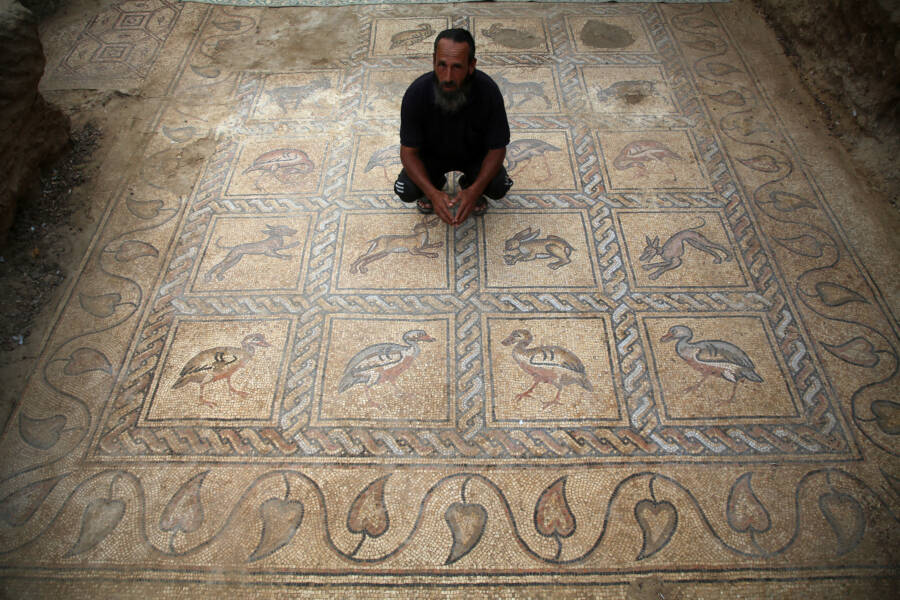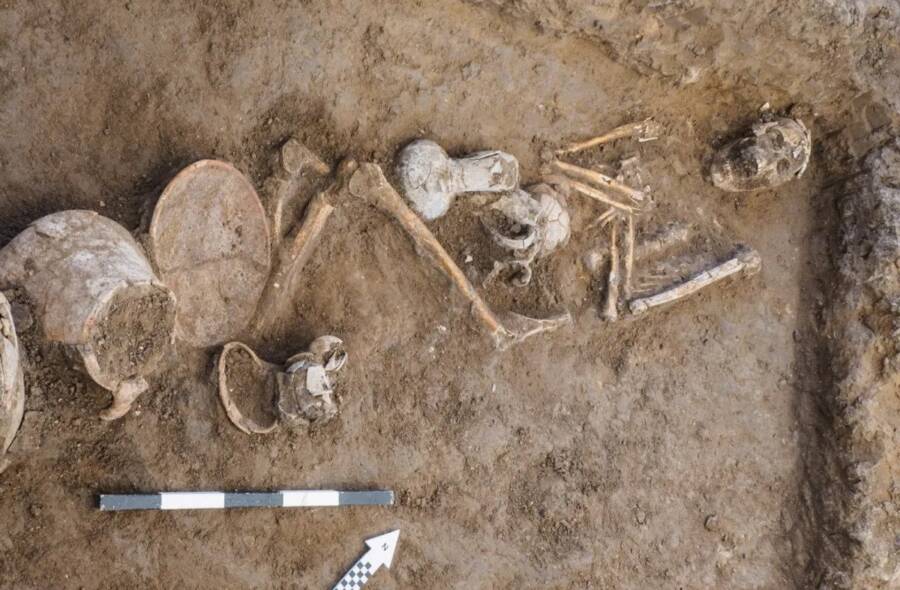Ancient Ho-Chunk canoe found in Wisconsin, Byzantine mosaic uncovered in Gaza, Bronze Age opium unearthed in Israel.
Archaeologists In Wisconsin Just Pulled A 3,000-Year-Old Ho-Chunk Canoe Out Of Lake Mendota

Wisconsin Historical SocietyDating back to 1000 B.C.E, this is the oldest canoe ever uncovered in the Great Lakes region by a margin of approximately 1,000 years.
Archaeologists in Wisconsin just pulled a Native American canoe from 1000 B.C.E. out of Lake Mendota. The canoe was carved by the Ho-Chunk people whose ancestral lands covered much of Wisconsin for thousands of years as they lived a nomadic lifestyle that saw them travel in groups of 50 to 60 while hunting and trading.
Carved from a single piece of white oak, the vessel remains in shockingly good condition after 3,000 years, although the lake’s waters have slowly transformed the wood to the point that it now “feels like wet cardboard.”
Read more about this incredible find here.
A Farmer In Gaza Just Uncovered An Ancient Byzantine Mosaic Beneath His Olive Orchard

Majdi Fathi/NurPhoto via Getty ImagesPalestinian farmer Salman al-Nabahin uncovered the mosaic floor while working in his olive orchard.
While working in his olive orchard in Gaza, half a mile from the Israeli border, a farmer discovered an ornate mosaic decorated with colorful birds and other animals buried beneath the dirt.
Salman al-Nabahin made the discovery after planting new trees in his orchard in the Bureij refugee camp. When some of the trees failed to properly take root, Nabahin and his son dug into the earth to find out why. After their ax struck something hard and unfamiliar, they brushed aside the dirt and took to the internet to find out what they had hit.
Dig deeper in this report.
Archaeologists In Israel Unearth Evidence Of History’s Earliest Opium Use In A Bronze Age Burial Site

Assaf Peretz/ Israel Antiquities Authority.This skeleton was buried with pottery vessels containing opium more than 3,000 years ago.
While excavating a site in Yehud, Israel, archaeologists with the Israel Antiquities Authority (IAA) discovered several late Bronze-Age skeletons that had been buried with pottery vessels shaped like poppy flowers. Now, in association with the Weizmann Institute of Science, they’ve determined that the vessels contained traces of opium.
Read on here.





